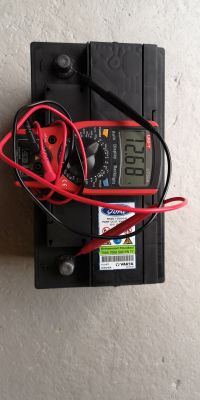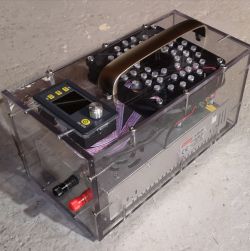Yes, after plugging in the computer, the charging was usually above 15V.
I exchanged it for a new Exide.
I also did the BMS reset, as you wrote, I could do it with a computer, but the combination of light switches also works.
In general, this charging system irritates me because it keeps the battery at the level of 12.2 - 12.4V, which means it leaves a reserve for recharging during engine braking, but no matter how long I drive, it was never fully charged.
But I have already resigned myself to it, I will simply recharge it with a power supply 2x for a year :)
I also made a plexiglass housing for the DPS5020 power supply.
For the test, I connected it to this old battery at 16.25V, 0.5A, CC mode.
After a week, the battery seems to have repaired itself because it already has a voltage of 12.6V and does not drop.





